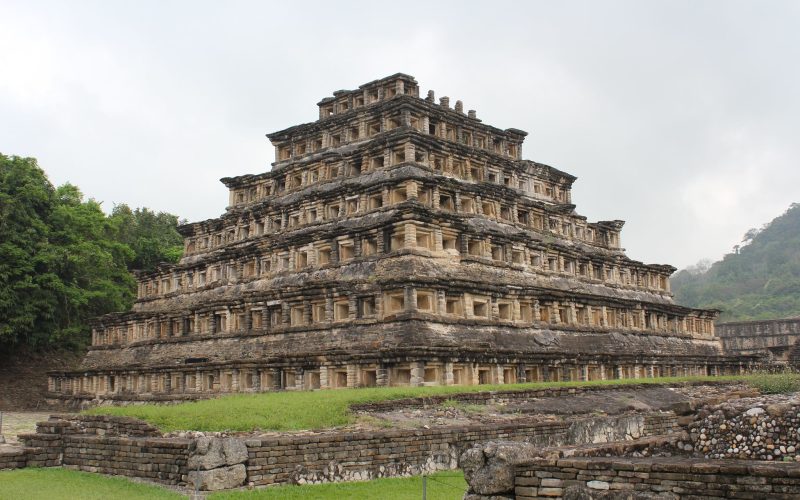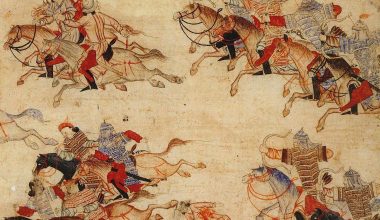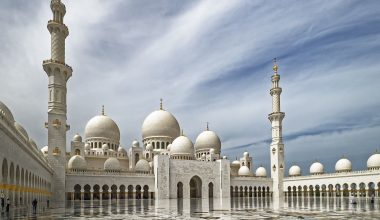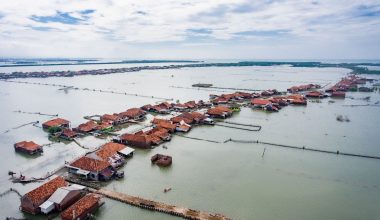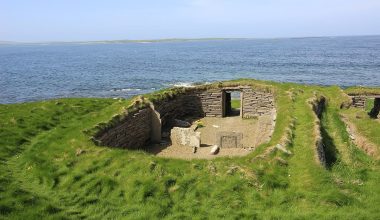Mexico is considered to be the land of monuments, temples, pyramids, and architecture. The artwork found in Mexico can’t be found anywhere else. Here are some of the most astonishing pyramids in Mexico.
Pyramids in Mexico
1. Pyramid of the Moon: Second-largest pyramid
One of the unique structures of pyramids located just outside Mexico City is the Pyramid of the Moon. This monument includes 6-7 stages and was created between 1 to 350 A.D. Archaeologists consider it the second-largest monument in Mexico City and the topmost stage of the pyramid is the altar for the goddess of Teotihuacan.
This pyramid was considered a sacred place and was used as a temple where the rituals were performed. The sacrifice of humans and animals was performed as a part of a ritual and an archeologist also found a human skeleton there. This discovery further led to the discovery of many tools and objects which were used in performing this ritual.
Also Read: Top 10 Oldest Buildings in the World
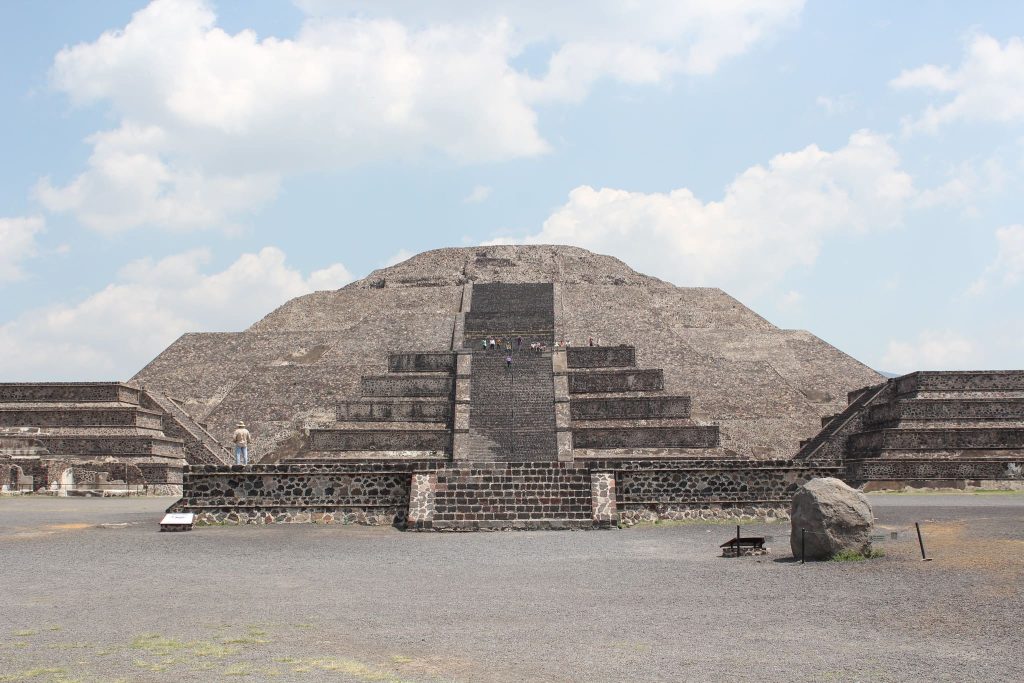
Image Source: Arian Zwegers
2. Coba: Nohoch Mul Pyramid
Between the floras of Manyan Jungle, a settlement of Coba is present. One of the important pyramids of the Mayan civilization called the Nohoch Mul Pyramid is present in the lost city of Coba. Having a height of 137 feet, Nohoch Mul Pyramid has earned the position of the tallest pyramid in the Yucatan Peninsula. With nearly 120 stairs, bright lakes and vegetation, and various food stalls outside the 7 leveled pyramids having round corners, the adventure to this pyramid are best preferred in the morning time.
Also Read: 10 Most Famous Prehistoric Cave Paintings

Image Source: Wikimedia
3. Calakmul: The Great Pyramid
The unbelievable, ancient, powerful, and far-off city in Mexico is Calakmul. Built in 250 AD, the Maya power ruled Calakmul which fell down in 900 AD. The whole city was turned into ruins which included great pyramids, temples, and many other buildings. The largest building of the Mayan period which was the tallest pyramid present in Yucatan called The Great Pyramid was also ruined. Again this city came into existence in 1931, now it’s a deep jungle with hot weather.
Also Read: 10 Mysterious Underwater Cities Of The Ancient World
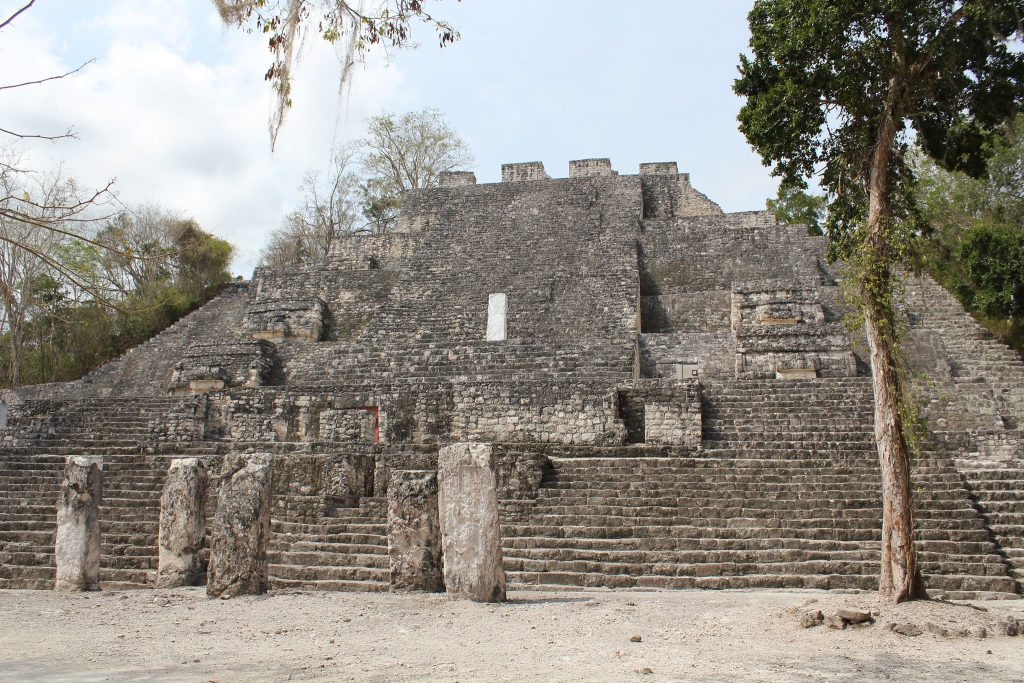
Image Source: Arian Zwegers
4. El Tajin: Pyramid of the Niches
Present in the Mexican state of Veracruz, the Pyramid of Niches was a great religious site for residents of El Tajin. Constructed between 1100 and 1150 CE, the Pyramid of the Niches was made of sandstone. Having 6 layers with a height of 3 meters each and placed over 36 meters square pedestal, the Pyramid of the Niches was 18 meters high.
Even though the power of El Tajin declined but still people believed in and respected the Pyramid of the Niches and decided to preserve this site from Spanish officials. But in 1785, it was discovered and several projects were started to discover the Pyramid of the Niches and many other new buildings.
Also Read: 10 Most Amazing Ancient Egyptian Temples

Image Source: Arian Zwegers
5. Uxmal: Pyramid of the Magician
Included as a World Heritage Site by UNESCO, Uxmal was a prevalent Maya city of Mexico. Growing up between 6-10 centuries, Uxmal was rich in architectural buildings with Puuc designs, curved doors, and beautiful decorations and the Pyramid of Magician was one of them.
This oval-shaped pyramid was built between 6 to 10 centuries and has three levels. With round corners, a vertical stairway toward the West, and a low steep stairway towards the East, The Pyramid of Magician was one of the most unique and beautiful architectural structures of Uxmal City.
Also Read: Top 10 Oldest Temples In The World
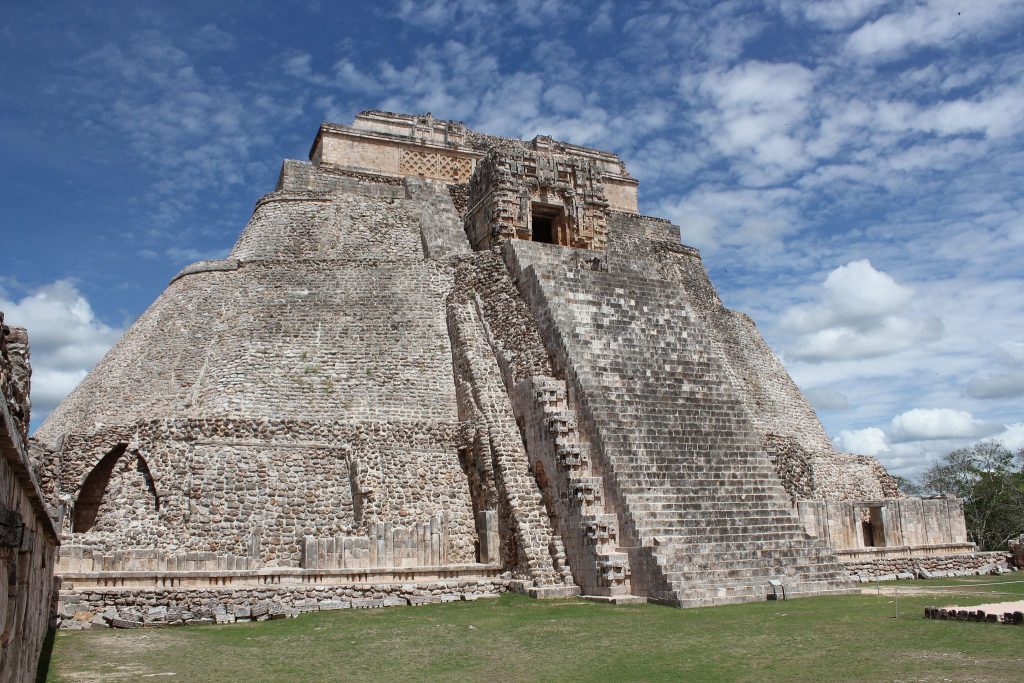
Image Source: Arian Zwegers
6. Pyramid of the Sun: The Sister Pyramid
Built in 200 AD, with 216 feet in length and a ground area of 730 by 760 feet, the Pyramid of the Sun is renowned as the third largest pyramid in the history of the world. Constructed by the residents of Teotihuacan, this pyramid is a home for 100000 people. Some people believe this pyramid to be constructed in honor of the sun and was a major site of worshipping at that time. Built with lime plaster and covered with red color, the plasters, and the colors have been ruined to a great extent.
Also Read: Top 10 Most Famous Greek Temples
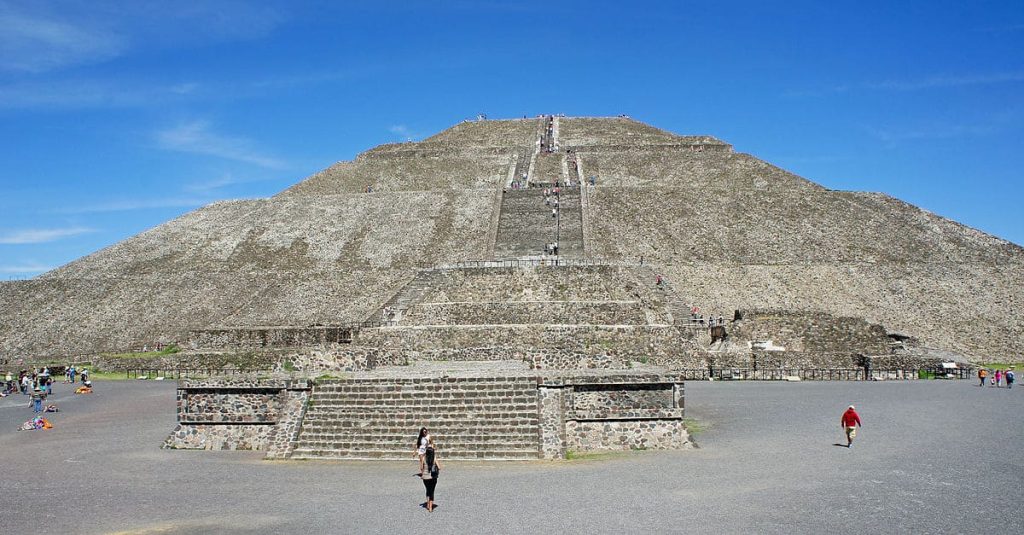
Image Source: Wikimedia
7. Chichen Itza: The Temple of Kukulkan
Included as a World Heritage Site by UNESCO, Chichen Itza is included of the new wonders of the world. The pyramids, courts, temples, and beauty of Chichen Itza make it more beautiful and attract more and more tourists. Built Puuc style of limestone, Chichen Itza was so rich in architecture that it was a major source of information about the traditions and cultures of the Mayan people.
The Temple of Kukulkan was one of the major pyramids constructed in honor of Venus planet and the god Kukulkan who had great devotion among the people. Kukulkan pyramid also renowned as El Castillo had two small pyramids with a total height of 30 meters.
Also Read: Top 10 Most Famous Monuments Of Ancient Egypt
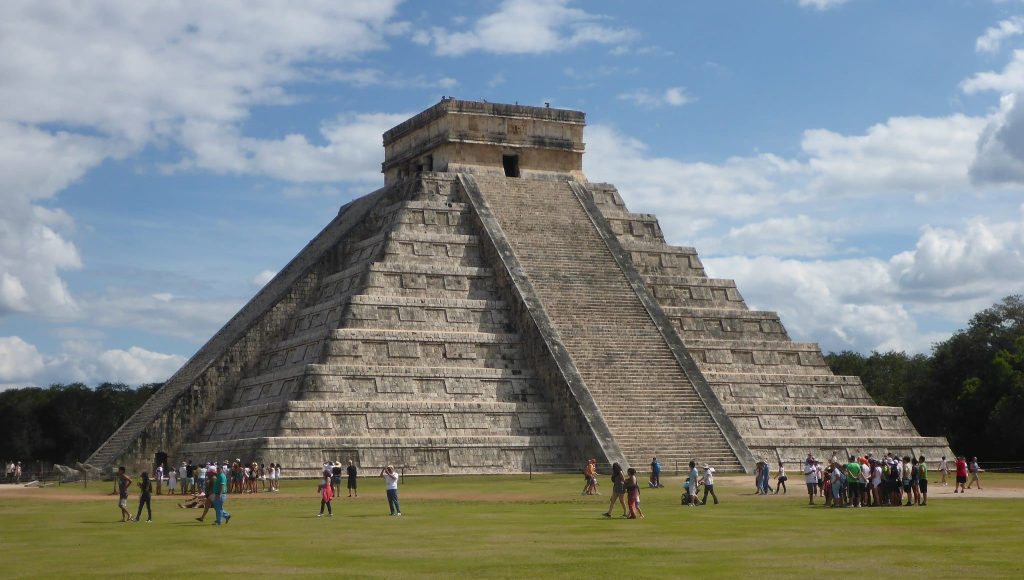
Image Source: Sam valadi
8. Palenque: Pyramids of the Inscriptions
Built in 683 CE to keep a beautiful emerald coffin for King Pakal, the Pyramids of the Inscriptions were located in the Palenque. Pyramids of the Inscriptions were renowned mainly because the history of Palenque was imprinted on the walls there and was also used as a burial ground by the people. With nine layers 69 contracted and vertical steps, and 5 doorways, the Pyramids of the Inscriptions were 27 meters high 60 meters in width, and 42 meters in depth. A beautiful roof along with a hilly background adds beauty to the pyramid.
Palenque Ruins: Known as Lakam Ha in Maya, Palenque (pronounced pa-lan-kay) stands out as one of Mexico’s premier Mayan Ruins and holds UNESCO World Heritage Site status. Nestled in the enchanting Palenque Pueblo Magico, it’s approximately a four-hour journey from the popular Chiapas destination, San Cristobal de las Casas. Hidden within the lush jungle, a day at Palenque Ruins unveils a myriad of ancient wonders. Enhance your experience by opting for one of the top Palenque tours with accredited guides. Beyond the archaeological treasures, explore the site’s natural beauty, including small waterfalls, jungle pools, and the lively howler monkeys that call Palenque home.
Also Read: Top 10 Most Beautiful Lost Cities

Image Source: Wikimedia
9. Pyramid of Quetzalcoatl
Located on the North Eastern side of Mexico City has some of the most famous pyramids and monuments. One of them is the Pyramid of Quetzalcoatl which is also known as the Temple of Quetzalcoatl. The temple is known for its beauty and the fine-looking walls and stones engraved added elegance to the temple. People of Mesoamerica worshipped the Quetzalcoatl god and over time worship of Quetzalcoatl became well-known and extensive.
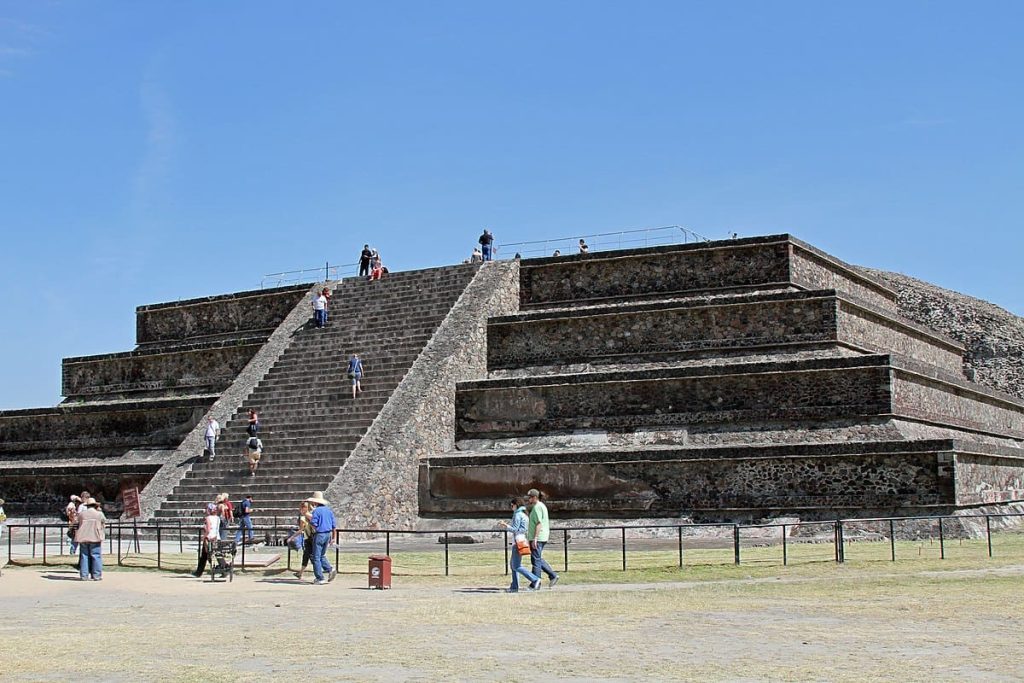
Image Source: Wikimedia
10. La Venta: Great Pyramid of La Venta
Built in around 900 B.C., La Venta is one of Mexico’s oldest pyramids and is situated in Tabasco State. Actually, at that time it was a small island rich in vegetation, agriculture, and marine sources. Along with this, La Venta was known for a wide no of sculptures, and tombs that went underground. Surprisingly, this monument is not built of stone rather clay is used. Actually, it was rectangular but with time due to clay, it softened and changed its shape into a round hill.
Also Read: Top 10 Best And Most Popular Historical Periods
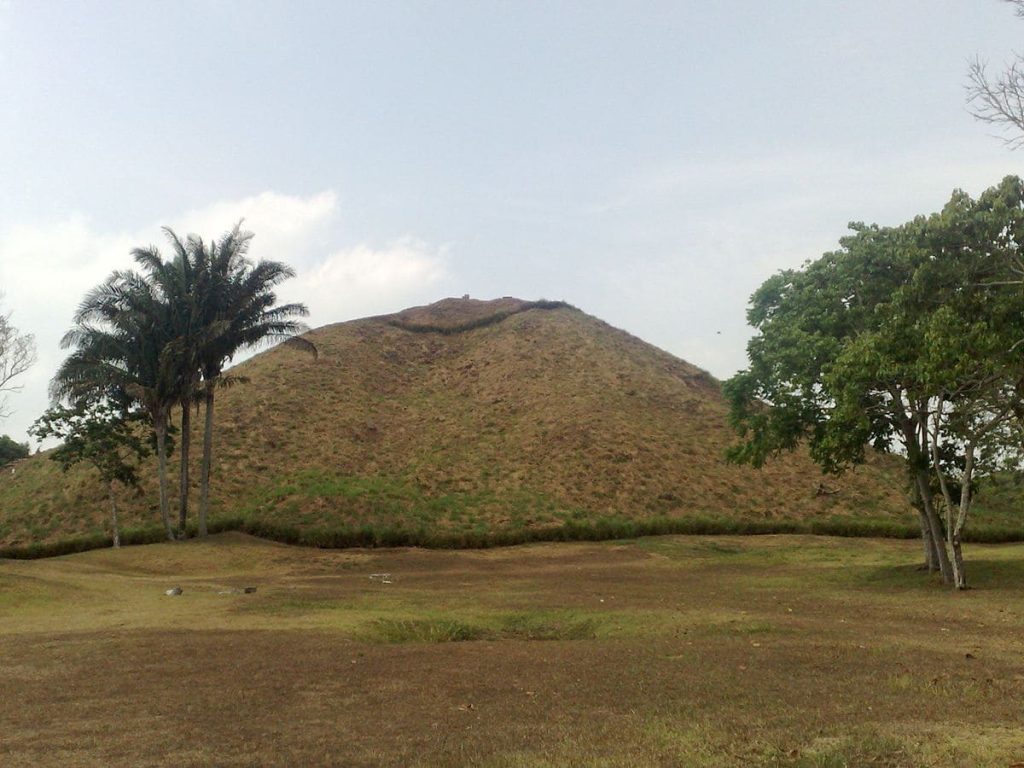
Image Source: Wikipedia
11. Temple of the Wind God, Tulum Ruins
Tulum Ruins: Situated just 5-10 minutes from Downtown Tulum on the northern tip of Tulum Beach, the Archaeological Zone of Tulum, commonly known as Tulum Ruins, provides the easiest access to Mayan history in Tulum, Mexico. Nestled within Tulum National Park, it stands as one of the smaller Mayan sites but compensates with stunning beauty, perched on a cliff overlooking the Caribbean Sea. Notable within its confines is the Templo del Dios del Viento (Wind God Temple), a renowned structure. Follow the designated path to explore other captivating buildings within Tulum Ruins, making it a must-visit site for its historical charm and picturesque setting.

Image Source: Arian
12. The Tower, Ek Balam Ruins
Situated approximately two hours from both Cancun and Tulum and a short 30-minute drive from Valladolid, Mexico, Ek Balam Mayan ruins offer a less-traveled destination. It’s not unusual to find yourself alone in this visually captivating site, where thatched roofs gracefully contrast with stone pyramids. The intricately carved stone statues within the buildings, tucked beneath the thatched overhangs, are a hidden gem worth exploring. The highlight is climbing the main pyramid, El Torre (The Tower), on the Great Acropolis, providing breathtaking jungle views. Ek Balam’s off-the-beaten-path charm offers a unique and serene experience amid Mexico’s rich Mayan history.
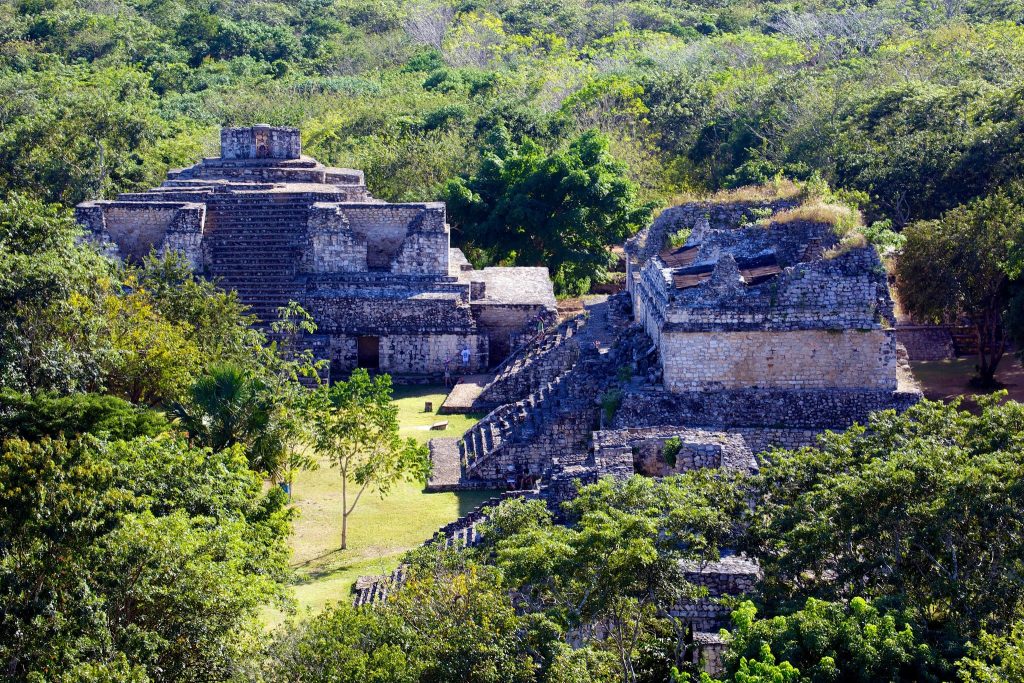
Image Source: Wang
13. Great Pyramid of Cholula
If you were to inquire about the world’s largest pyramid by volume, the common assumption might be one of Egypt’s Great Pyramids. Surprisingly, however, the title goes to the Great Pyramid of Cholula in the vibrant town of Cholula, Mexico. Astonishingly, much of this colossal pyramid lies concealed beneath the surface. Following the Spanish conquistadors’ arrival in Mexico, Catholic churches were constructed directly atop existing temples. The Great Pyramid, concealed beneath the Nuestra Señora de los Remedios Cholula church, remains an intriguing testament to the layering of civilizations and the unique history that unfolded in this colorful form.
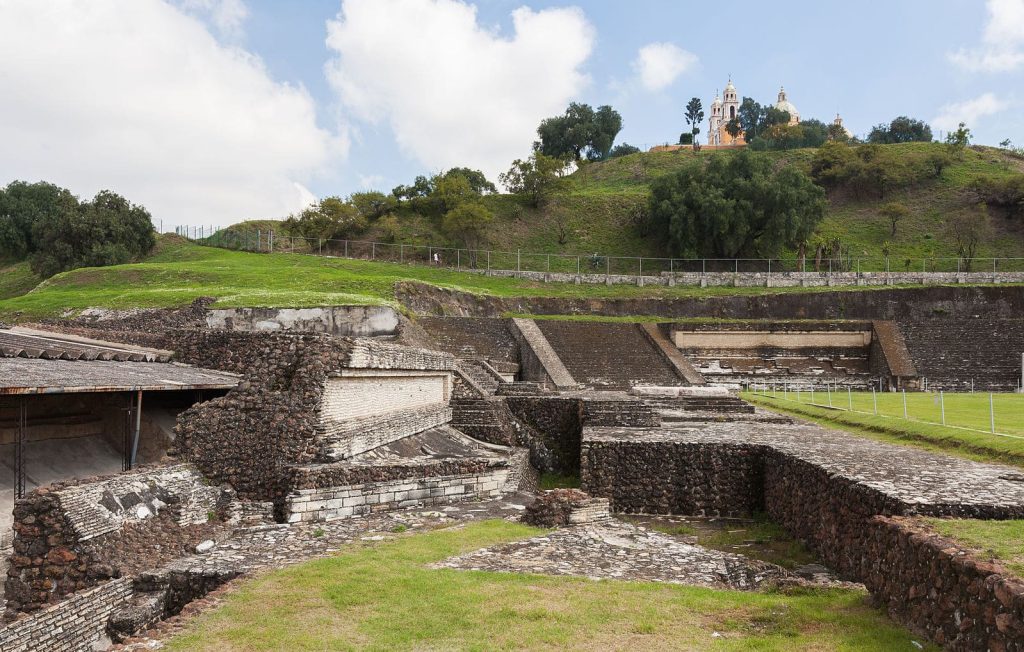
Image Source: Wikimedia
14. Temple Building of Five Stories Edzna Ruins
Among the myriad pyramids in Mexico, Edzna stands out for its captivating beauty, at least in my view. The focal point, the Temple Building of Five Stories, rises impressively at 131 feet (40m) with its five levels. While climbing is restricted on this structure, other climbable pyramids like the Small Acropolis and The Palace offer panoramic views. Notably, the Temple of the Masks, unearthed as recently as 1988, adds to Edzna’s allure. Adorned with two distinct masks, one depicting the Mayan Sunrise God on the east side and the other featuring the Sunset God on the west side, it stands as a testament to the site’s rich history.
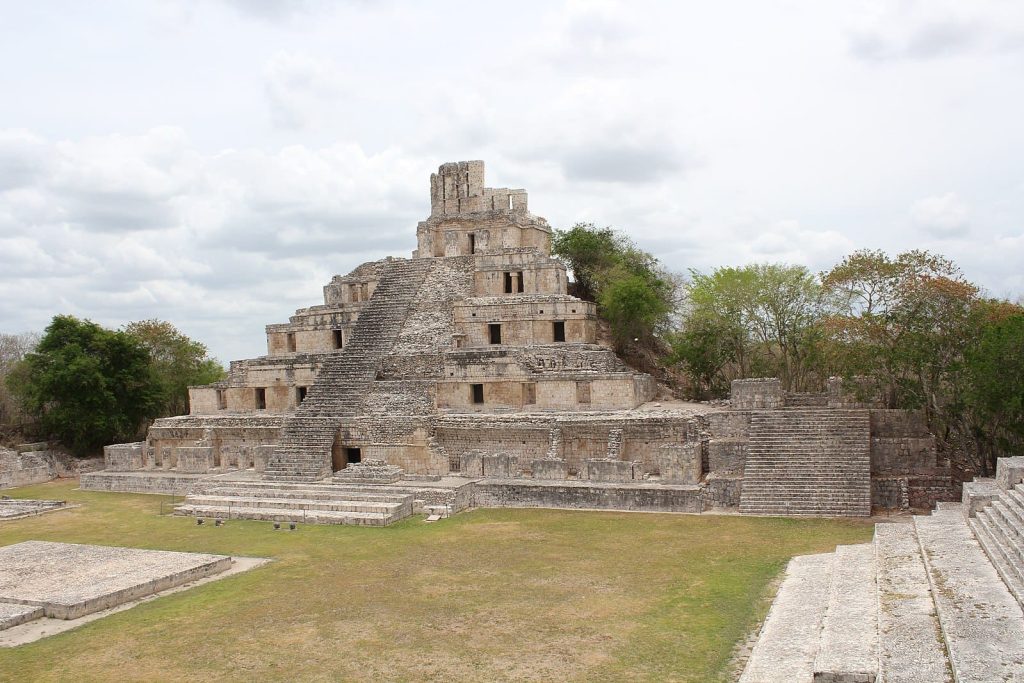
Image Source: Wikimedia
15. Pyramid of Quetzalcoatl, Tula Ruins
Approximately 60 miles north of Mexico City, in Tula de Allende, often referred to simply as Tula, lie the remains of the former capital of the Toltec civilization. Flourishing during the 9th to 12th centuries, Tollan (present-day Tula, Mexico) stood as one of Mesoamerica’s largest cities in its prime. Diverging from the architectural style linked to the Aztec civilization seen in many Central Mexican pyramids, the ruins of Tollan are believed to exhibit strong influences from the Mayans. This distinction adds to the historical significance of Tula, showcasing a unique blend of cultural influences in the heart of Mesoamerican civilization.

Image Source: Wikimedia
16. Templo Mayor Aztec Pyramid
In the distant past, the Templo Mayor Aztec Temple served as the focal point of the Aztec Empire. Following the Spanish conquest of Tenochtitlan, modern-day Mexico City, the temple was buried, obscured beneath the construction of the Mexico City Zocalo (Town Square). Initial attempts to locate this ancient pyramid date back to the 19th Century, although public interest was initially limited. Undeterred, archaeologists persisted in their quest, and by the 20th Century, they had a promising lead on the temple’s possible location. Surprisingly, the actual discovery of this Pyramid occurred accidentally, adding an unexpected twist to its excavation history.

17. Cañada de la Virgen Pyramid
It is situated near the well-known towns of Guanajuato City and San Miguel de Allende, Cañada de la Virgen is an Otomí archaeological site on private land. Discovered in 2002 and accessible to the public since 2011, the Cañada de la Virgen Pyramid offers a glimpse into Otomi history. The Otomi people have inhabited this region in Central Mexico for millennia, and according to the National Institute of Indigenous Peoples of Mexico, they constitute the fifth-largest indigenous group in the country, with approximately 675,000 Otomi individuals residing in the area today. This site serves as a testament to their enduring cultural presence.
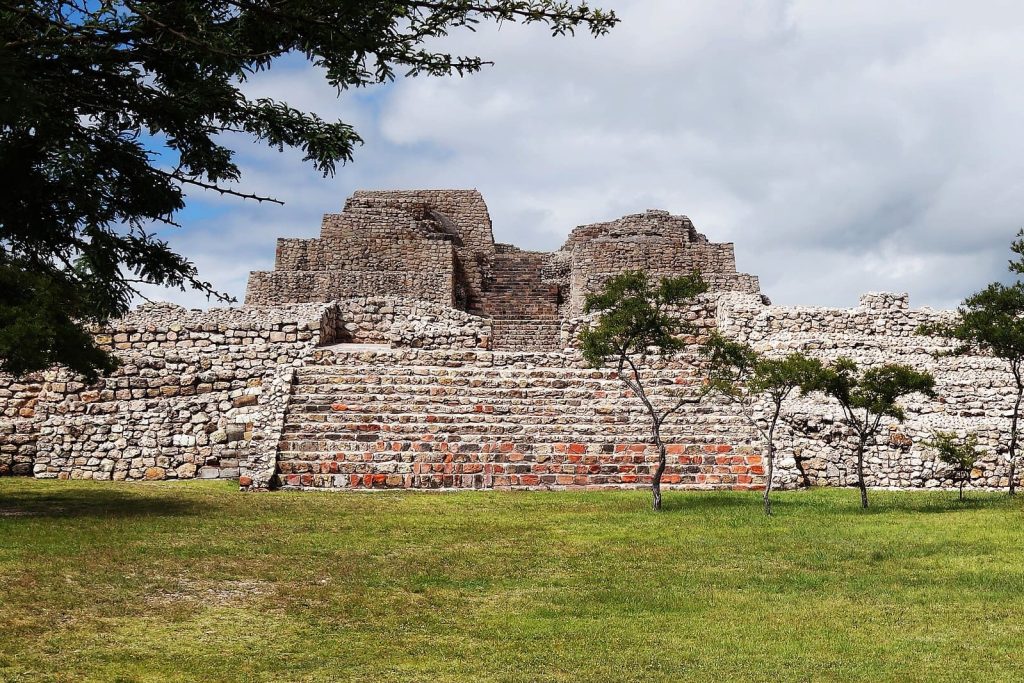
Image Source: Wikimedia
18. El Castillo, Muyil Ruins
While officially named Chunyaxché, the Mayan ruins commonly known as Muyil lie just south of Tulum in Felipe Carrillo Puerto, adjacent to the UNESCO-recognized Sian Ka’an Biosphere Reserve. Differing significantly from the nearby Tulum Ruins, Muyil provides a distinct insight into Mayan culture. Displaying Peten architecture, the site features steep-walled pyramids reminiscent of those found in Tikal, Guatemala—an expansive Mayan city. The proximity to the Sian Ka’an Biosphere Reserve adds to the allure of Muyil, creating a unique experience that showcases the diverse architectural styles and cultural aspects of the ancient Mayan civilization.
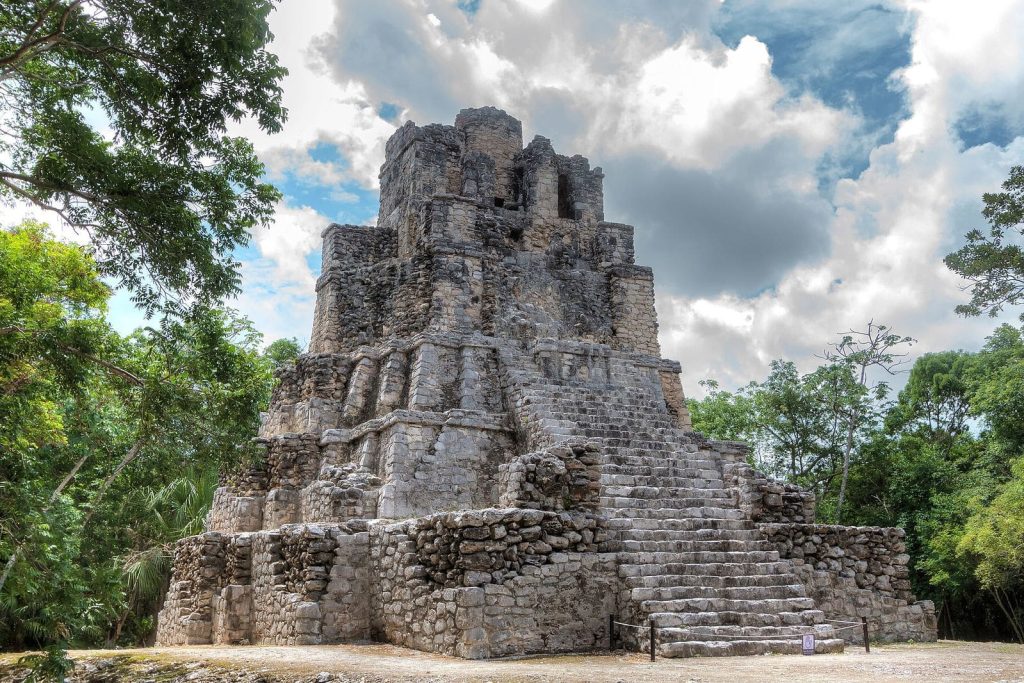
Image Source: Wikimedia
19. Great Pyramid, Kabah Ruins
The ancient city of Kabah, dating back 1,300 years, features a collection of Mexican Mayan temples and structures waiting to be explored. Among them is the Palace of Masks, the central and most impressive structure, adorned with over 300 intricately carved stone masks. Another notable site is the Great Pyramid of Kabah. While Uxmal Ruins may be more well-known, the Puuc Route boasts four additional sites: Sayil, Labna, Xlapak, and Uxmal. It’s important to note that all these sites, and not just Uxmal, hold the UNESCO World Heritage Site designation, showcasing the rich historical and cultural significance of the entire region.
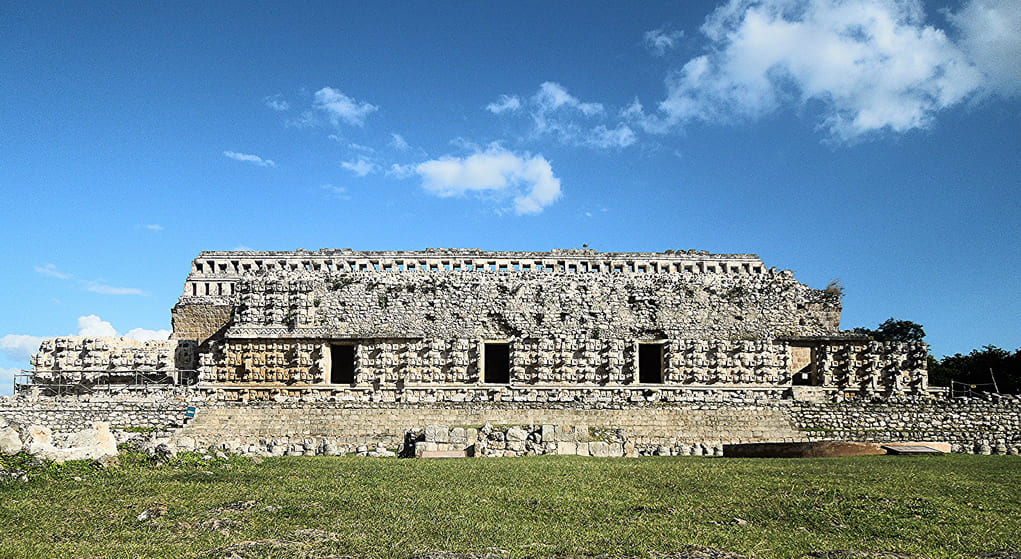
Image Source: Wikimedia
20. Tlatelolco Pyramid in Mexico City
The pyramid was originally built by the Tlatelolca in multiple stages and after certain modifications. The pyramid is located at the heart of the city, however, Tlatelolco was considered a separate city-state that rivaled the Aztec capital of Tenochtitlán in size and importance. The location of the archeological site at the Plaza of Three Cultures is very important for the representation of pre-Hispanic, Spanish, and independent Mexican periods. It is one of the most popular pyramids in Mexico.

Image Source: Ted
These are the 20 most amazing pyramids in Mexico. Kindly share and do post your comments.
